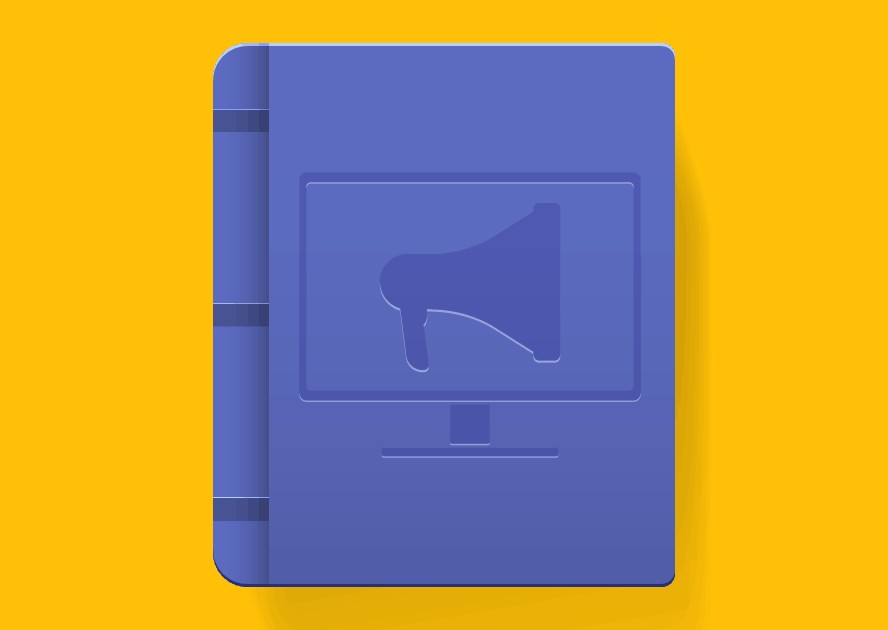Digital Marketing terms make life easier for a marketer. Knowing the exact concept of what you are trying to implement will help you to understand what that is about, and make your life easier when you are looking for tips and good practices. But there are so many of them that it is easy to get lost.
That’s why we decided to set up a guide with Digital Marketing terms every marketer should know, along with their definitions and applications.
Check it out!
1. A/B Testing
A/B testing is a resource used by companies all around the world to understand what clicks with their audience and why.
You can say a campaign is being A/B tested when your marketing team develops two different ideas and test them randomly among users of a website or application.
With A/B testing it is possible to understand what resonates and delivers the goals of a campaign. That knowledge should be well documented so it can be used in future iterations of a product, service or software.
2. Ad Blocking
Those who promote a lot of pay-per-click ads are probably familiar with this term, but some of you might not be. Ad Blocking is using software to block ads while you navigate the web.
Ad blockers have drastically changed the way marketing is done in companies. Banners and word ads had to rapidly be replaced by content so that a brand could still be able to reach customers that use these kinds of ad blocking tools.
According to Social Media Today, at least 30% of all users have at least one ad-blocking tool and recently even companies that profit from ads, like Google, have launched their own versions of ad blocking software.
3. Advertising network
Everybody who promotes a product or service on the internet should be familiar with the idea of an advertising network.
The term simply refers to a collection of places that have open space for other companies to advertise in.
4. Alt Text or Alternative Text
Uploading an image to a content management tool like WordPress?
You will see that among the boxes given as options to complement that content one is labeled “Alt Text”.
Alt Text is any kind of complementary text that shows when images can’t be displayed.
The alt text caption usually describes a picture, being used both to help with Search Engine Optimization and accessibility as the texts are often read by speech tools used by people whose vision is impaired.
5. Autoresponder
Thinking of automating part of your company’s marketing efforts? Then you will be hearing about autoresponders.
An autoresponder is a tool that can, automatically, answers an email message with a predefined response.
It also can be used in marketing, to let a client know that their submission at a website was successful.
6. B2B and B2C
B2B and B2C are two terms that are often used to differentiate a business from another.
The first one means Business To Business and refers to the companies that primarily focus their efforts on reaching other companies.
Their core business is focused on offering solutions that individuals might not need.
The second means Business To Consumer and refers to every company that markets directly to individuals.
It is important to understand that a company can do both. Good examples are brands like Apple and Samsung that sell directly on their websites and stores for individual consumers, and also to companies who use their equipment on their operations.
7. Banner blindness
Since banners became a thing and dominated the web our brains have adapted to them. Marketers have coined the term “banner blindness” to refer to that adaptation.
Banner blindness is when a person is capable of browsing a web page without even noticing the ads available in it.
Often banner blindness is a result of the standardization of online advertising.
As ads are more commonly placed in the same spots every single time banner blindness kicks in once we get used to those patterns.
8. Bounce rate
Bounce rate refers to the number of users who have clicked on a link and opened a webpage, but lost interest in it after visiting only one area of the website.
A high bounce rate often means that your business is not targeting properly the audience it hopes to achieve, but it can also be an indicator that a page needs updates to better serve the user.
The bounce rate has another meaning in the context of email marketing campaigns.
Whenever you see this Digital Marketing term being used in regards to emails it means they couldn’t be delivered to the users.
A soft bounce happens for temporary errors, like a full inbox or an email that is too large.
The hard bounce happens when you have a permanent error — when you type the wrong email address or when the account isn’t available anymore.
9. Call to Action or CTA
A call to action acts just as the name says: it invites the user to do one specific thing after they have consumed content.
Calls to action are often used to guide potential clients through the sales funnel.
Some examples of types of calls to action businesses often use online are:
- sign up for the newsletter;
- share content on social media;
- get in touch with the brand;
- try a new product; and
- ask for a quote.
Many other calls to action can be used to further a business’ goals. Picking the right one for each type of content, and each stage of the sales funnel is a big part of creating content marketing that works.
10. Click-through rate (CTR)
CTR or click-through rate is a performance indicator used by marketers to understand user behavior.
It evaluates the average number of people that clicked in an ad, per number of impressions — and it is always a percentage. It can also be used in the context of email marketing campaigns, internal links, and CTAs.
11. Cookie
Most of us are familiar with the tasty cookies our grandmas used to make, but what about internet cookies?
This Digital Marketing term refers to a piece of information that is stored locally on a given user’s computer, so it can be redeemed every time he returns to a webpage.
It usually contains user preferences like staying logged in on a page or what browser they are using.
Cookies help marketers gather data about how often their websites are visited and by whom.
12. Email marketing
Email marketing is a strategy that consists of marketing campaigns sent by email to a user base.
A lot of different types of campaigns can be built around email marketing, just like traditional marketing used to do with mailing lists.
Usually, they promote products, but they also can help build a relationship with customers, inform them of important updates on platforms they use or deliver content.
13. Freemium
Freemium is the name given to tools that can be used for free, but offer extra functionalities once the user buys a signature, buys the full version of the app or buys upgrades that are sold separately.
This business model is used frequently by app makers, software companies and video game developers.
14. Inbound Marketing
Inbound Marketing is a strategy used by companies to sell more using Digital Marketing as a tool.
The Inbound strategy is focused on attracting, engaging and delighting customers. It uses Content Marketing, SEO and social media tactics to communicate with the target audience.
15. Keyword
A keyword is a word or group of words — in or out of a sentence — that is used to make content easier to find in search engine tools.
Google examines the web looking for high-quality texts that have the keyword researched as the main topic in the text. This way, the user can find the answers they are looking for.
A company with a good keyword game can generate a lot of organic leads, which is the name given to leads that do not come from advertising, but from those organic searches.
16. Link building
Link building is the act of linking existing content on a blog post.
Quality links pointing to your page can help to rank better in search engines. However, those links needs to be contextualized to the content you are working on.
There are two types of links: inbound and outbound. The inbound links send the reader to a page on your domain. Outbound links, as you can imagine, send them to an outside page.
Both of them contribute to how well a web page ranks and are very important for a successful Content Marketing strategy.
17. Outbound Marketing
Outbound Marketing can be described as the opposite of Inbound Marketing. While in an Inbound strategy your clients find you in an organic way, in Outbound you need to go after those clients.
In previous days, Outbound was connected with telemarketing, billboard, TV, and radio strategies. Today it also relates to paid advertising, such as Facebook Ads and Google Ads.
18. Viral marketing
Content is deemed viral when it spreads quickly on the internet and often spontaneously.
This type of content is usually built to engage and to be too irresistible not to share. One web page that often relies on this kind of marketing strategy is BuzzFeed.
The Digital Marketing dictionary keeps expanding and you must not lose track of innovations in the area if you want to understand exactly what people are talking about.
This glossary is a great way to start brushing off on old and new concepts that will help you strategize better.
Think we missed some Digital Marketing terms that are important for a marketer? Use the comment section to let us know which ones!
2024 State of Marketing Report
Your golden ticket to crush your goals with data-driven insights!
2024 State of Marketing Report
Your golden ticket to crush your goals with data-driven insights!

![[Rock NA] State of Marketing Reports 2024 – Comkt Hubspot State of Marketing Report 2024](https://rockcontent.com/wp-content/uploads/2022/07/Banner-Fino-Rock-Convert-2500-%C3%97-500-px-19.png)






